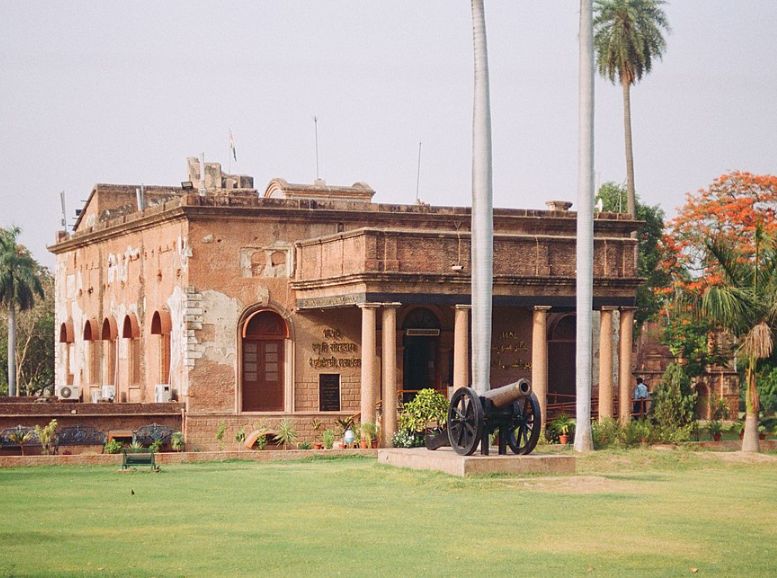Lucknow Residency, a majestic monument in the heart of Lucknow, India, whispers tales of a bygone era. Erected in 1800 by the British East India Company, this residence for the British Resident General soon became the center stage for a pivotal moment in Indian history – the Siege of Lucknow during the 1857 Rebellion.
Today, the Lucknow Residency stands as a poignant testament to India’s colonial past. Sprawling gardens embrace crumbling walls, while hauntingly beautiful architecture speaks volumes. As you explore its historic charm, unravel the timeless stories etched within its very stones. Uncover the secrets it holds and delve into the rich tapestry of the monument’s cultural significance.
Discover why the Lucknow Residency continues to enthrall visitors from across the globe. This iconic landmark beckons you to embark on a journey of exploration and understanding.
How to reach:
Taking Flight:
Lucknow’s Chaudhary Charan Singh International Airport welcomes travelers from across India. Upon arrival, taxis and buses are readily available to whisk you to the Lucknow Residency. The airport sits roughly 15 kilometers away, making the journey by road a comfortable 30-minute ride.
Railway Rendezvous:
Lucknow boasts two major stations – Lucknow Junction and Lucknow Charbagh – both boasting excellent connections to cities nationwide. Taxis and local buses are your trusted companions upon arrival, transporting you to the Residency in approximately 15-20 minutes by road, with the distance clocking in at around 5 kilometers.
Hitting the Road:
Lucknow’s excellent road network connects it seamlessly to major cities in Uttar Pradesh and beyond. Whether you choose state-run or private buses, taxis, or your own car, reaching the heart of the city and the Lucknow Residency is a breeze.
Best time to visit:
Winter (October to March)
- The winter months in Lucknow, from October to March, offer the most pleasant weather for exploring Lucknow Residency. The temperature during this time ranges from 10°C to 25°C, making it ideal for sightseeing and outdoor activities.
Summer (April to June)
- The summer months in Lucknow, from April to June, are hot and dry, with temperatures soaring as high as 45°C. Visiting Lucknow Residency during this time can be challenging due to the scorching heat.
Monsoon (July to September)
The monsoon season in Lucknow, from July to September, brings heavy rainfall and high humidity to the region. While the city looks lush and green during this time, visiting Lucknow Residency may be inconvenient due to the rainfall and waterlogged roads.
Attractions:
Lucknow Residency Complex:
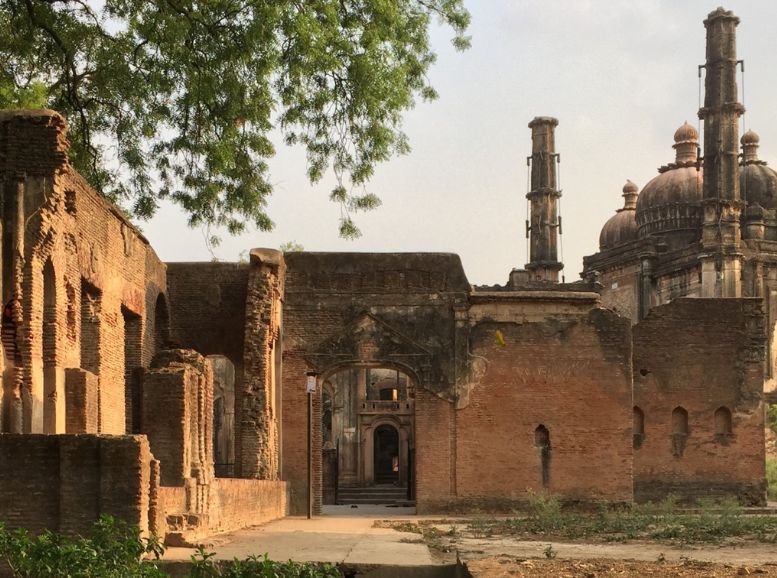
The soul of Lucknow Residency resides in its sprawling complex, a tapestry woven from several historic buildings. The ruins of the Residency itself, the silent sentinel of the past, stand alongside the stoic Residency Church and the poignant Residency Cemetery. Other administrative structures complete the ensemble, each whispering tales of Lucknow’s eventful history. Together, they stand as a testament to the city’s rich tapestry, waiting to be unraveled.
Residency Museum:
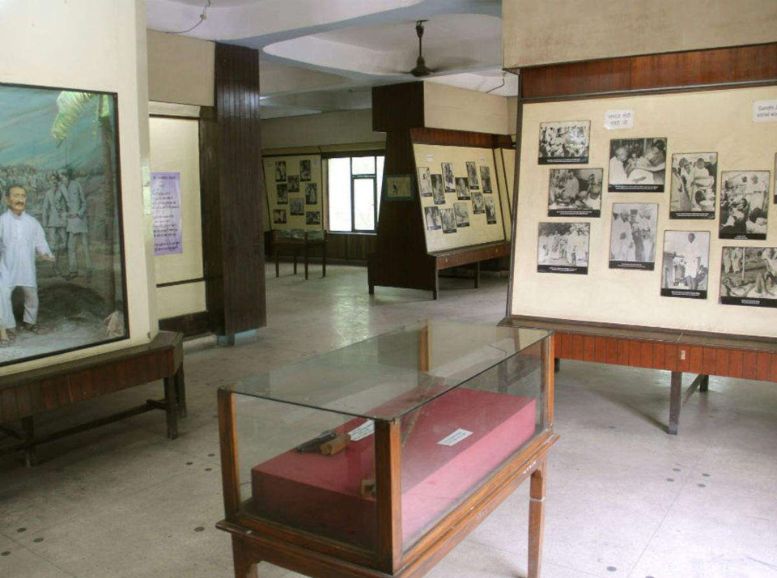
The sprawling complex also houses the Residency Museum, a treasure chest overflowing with artifacts, documents, and photographs. These precious items shed light on the 1857 Siege of Lucknow and the Residency’s fascinating history. Delve into the museum’s exhibits and gain a deeper understanding of this tumultuous period in Indian history. Witness firsthand the weapons wielded, personal belongings cherished, and everyday objects used by those who inhabited and defended these walls. The Residency Museum acts as a vital bridge, connecting the past to the present and ensuring the captivating story of Lucknow Residency endures.
Ruins of the Residency:
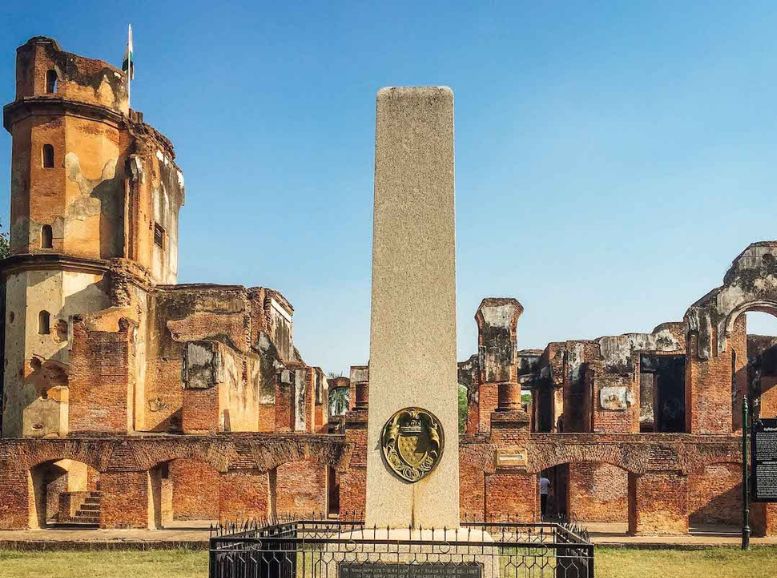
The ruins of the Residency stand as the most powerful testament to the 1857 Indian Rebellion. Bullet holes scar the walls, and crumbled structures echo the ferocity of the battles fought here. Walking through these evocative ruins, a hush falls over you. Here, amidst the decay, you can almost imagine the courage and desperation of those who fought for their beliefs, their stories woven into the very stones.
Residency Church:
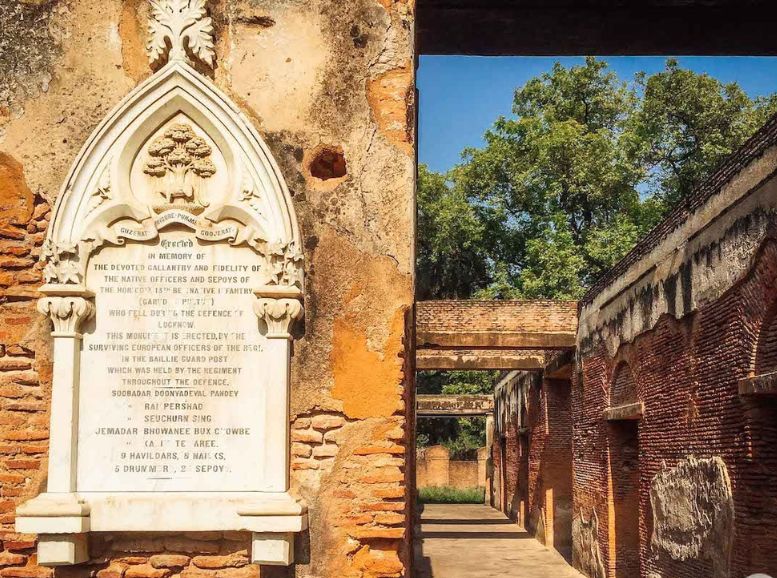
Standing in stark contrast to the battle-scarred Residency complex is the Residency Church, also known as St. Mary’s Church. Built in 1860, it serves as a solemn tribute to the soldiers who perished during the Siege of Lucknow. Gothic architecture defines the church, with its soaring spires and pointed arches creating a serene ambiance. Visitors can find a moment of quiet reflection here, admire the intricate details, and pay their respects to those who fell.
Residency Cemetery:
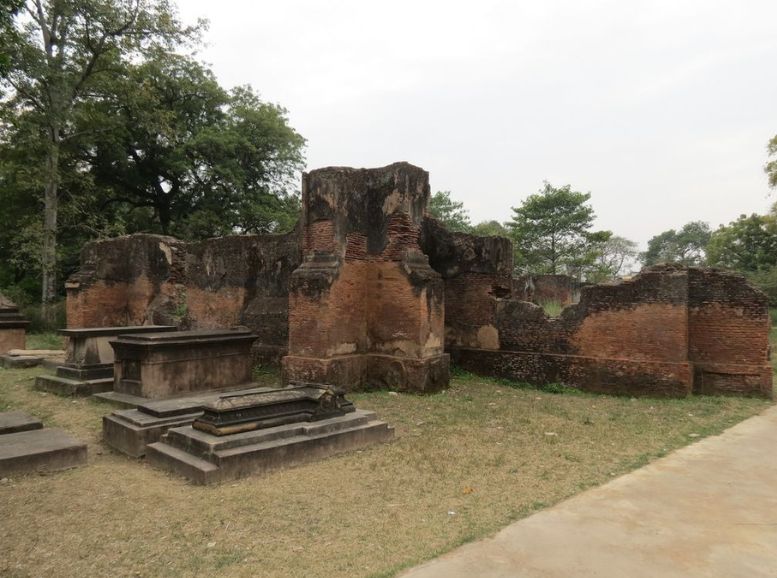
Stepping from the serene Residency Church, you enter the Residency Cemetery. Here, weathered headstones tell a somber tale. This poignant plot is the final resting place for many British soldiers and civilians who lost their lives during the Siege of Lucknow. The solemn atmosphere underscores the human cost of the rebellion, a silent tribute to those who gave their lives. The cemetery, existing alongside the church, creates a powerful contrast. It compels visitors to contemplate the fragility of life amidst the enduring echoes of history.
Lush Gardens:
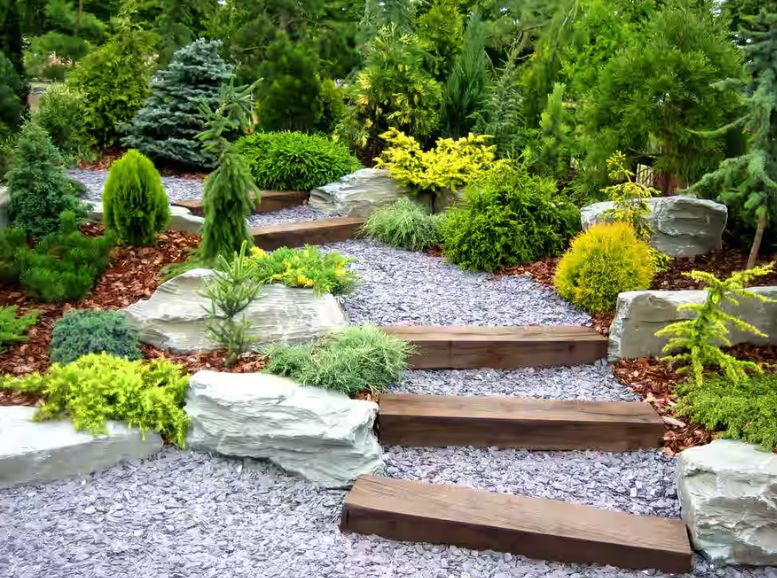
Emerging from the heart of the Residency complex, you’re greeted by a contrasting embrace of lush gardens. These meticulously maintained havens encircle the historic core, offering a peaceful sanctuary from the city’s bustling energy. Imagine strolling along verdant pathways, vibrant blooms bursting with color around you, the shade of mature trees providing a welcome respite from the midday sun. The Lucknow Residency beckons you to explore not just its historic depths, but also these tranquil pockets, perfect for quiet reflection or a relaxing picnic under the open sky.
Local Experiences:
Foodie Delights in Lucknow
Indulge in Lucknow’s culinary treasures: succulent kebabs, aromatic biryanis, and flavorful chaat. Head to iconic eateries like Tunday Kababi, established in 1905 and famed for its melt-in-your-mouth kebabs . Dastarkhwan, another Lucknow institution, offers an unparalleled fine-dining experience with authentic Awadhi cuisine.
Heritage Walks
Embark on a heritage walk through Lucknow’s old city and discover architectural marvels like Bara Imambara, a labyrinthine wonder and the largest Shia Imambara in the world . Chota Imambara, another architectural gem, is known for its intricate stucco work and opulent interiors .
Chikankari Shopping
Shop for exquisite Chikankari embroidery, a Lucknowi tradition practiced for centuries. This delicate and intricate white-on-white embroidery adorns sarees, suits, kurtas, and other garments. Head to popular shopping destinations like Hazratganj, a bustling commercial center, and Chowk, the heart of Lucknow’s old city, to find a treasure trove of Chikankari delights.
Lucknow Street Food Tour
No Lucknow exploration is complete without a street food tour. Embark on a delicious journey and tantalize your taste buds with a variety of local favorites. Sample crispy samosas, melt-in-your-mouth jalebis dipped in sugary syrup , refreshing paan with its unique blend of ingredients , and creamy kulfi, the perfect way to end your flavorful escapade.
A Relaxing Interlude: Gomti River Cruise
Enjoy a relaxing boat ride on the Gomti River, the lifeline of Lucknow . Take in panoramic views of the city skyline as you gently cruise along the water. Watch the sunset paint the sky in hues of orange and pink, creating a picture-perfect moment.
Live Performances
Experience the essence of Lucknow’s vibrant culture by attending live music and dance performances. Witness the graceful movements of Kathak dancers, a classical Indian dance form that originated in Lucknow. Immerse yourself in the soulful melodies of Qawwali recitals, a unique blend of Sufi Islamic devotional music.
Rickshaw Ride Through Lucknow
Explore Lucknow like a local in a traditional cycle rickshaw . Let your friendly rickshaw driver navigate the bustling bazaars and historic neighborhoods, revealing hidden gems and sharing local stories. Experience the city at a slower pace, taking in the sights, sounds, and smells of Lucknow’s vibrant streets.
Travel tips:
- Plan Your Schedule: Research the Residency’s opening hours, ticket prices, and any special events happening during your visit.
- Dress for the Season: Pack light, breathable clothing for Lucknow’s hot and humid summers. Winters can get chilly, so bring a light jacket or shawl for evenings.
- Hydration is Key: Carry a reusable water bottle and stay hydrated, especially during the scorching summers. Water facilities are available within the complex, but having your own supply is convenient.
- Sun Smarts: Don’t underestimate the Lucknow sun. Pack sunscreen, a hat, and sunglasses for summer visits.
- Comfortable Footwear: Explore the Residency on foot, so sturdy and comfortable walking shoes are recommended. Uneven pathways might be present.
- Respectful Exploration: Remember local customs and traditions. Dress modestly, particularly if visiting nearby religious sites.
- Capture Memories: Photography is allowed within the Residency. Bring your camera or smartphone to capture the architectural beauty and surroundings. Be mindful of areas with restricted photography.
- Guided Insights: Consider joining a guided tour to gain deeper historical knowledge and significance of the Residency.
- Light and Sound Spectacle: Immerse yourself in the captivating evening light and sound show. It brings the Residency’s history to life, offering a unique perspective on the 1857 Indian Rebellion.
- Expand Your Exploration: Extend your Lucknow adventure by visiting nearby attractions like Bara Imambara, Chota Imambara, and Rumi Darwaza. These historical landmarks offer a glimpse into Lucknow’s rich cultural heritage.
Conclusion
Unveiling Lucknow’s secrets is where your adventure with Xplro.com, your travel companion, begins. The Lucknow Residency isn’t just a history lesson; it’s a portal to a bygone era you can touch. Explore the evocative ruins, weathered stones whispering stories of resilience. Pay your respects at the solemn church and cemetery. Seek tranquility amidst the verdant gardens, a welcome escape from the city’s vibrancy. As dusk falls, witness history come alive with a captivating light and sound show, where dazzling lights and stirring narration paint a vivid picture of the past. Every corner murmurs tales of the siege’s brave souls. Whether you’re a history buff or simply captivated by culture, Xplro.com curates the perfect itinerary to unlock Lucknow’s magic. We’ll take you beyond the Residency’s walls, transforming you from a tourist into a local explorer, ready to discover hidden gems and experience the true essence of Lucknow.
FAQs
1. What is Lucknow Residency?
- Lucknow Residency is a historic complex located in Lucknow, Uttar Pradesh, India. Built-in 1800 by the British East India Company, it served as the residence for the British Resident General of the province of Oudh.
2. Why is Lucknow Residency significant?
- Lucknow Residency is historically significant as it was the site of the 1857 Siege of Lucknow during the Indian Rebellion against British rule. The complex witnessed a prolonged battle between British forces and Indian rebels, becoming a symbol of the struggle for Indian independence.
3. What are the main attractions of Lucknow Residency?
- The main attractions of Lucknow Residency include the Residency Complex, Residency Museum, ruins of the Residency, Residency Church, Residency Cemetery, Dr. Bhimrao Ambedkar Samajik Parivartan Prateek Sthal, lush gardens, and the evening light and sound show.
4. What can visitors see at the Residency Museum?
- The Residency Museum houses a collection of artifacts, documents, and photographs related to the 1857 Siege of Lucknow and the history of the Residency. Visitors can explore exhibits that provide insights into the events of the rebellion.
5. Can visitors explore the ruins of the Residency?
- Yes, visitors can explore the ruins of the Residency, which include bullet-riddled walls and crumbling buildings that bear witness to the events of the 1857 Indian Rebellion. Guided tours are available to provide insights into the history of the site.
6. Is photography allowed at Lucknow Residency?
- Yes, photography is allowed within the Residency complex. Visitors are welcome to take photographs of the historic buildings, ruins, and surrounding gardens. However, they are requested to be respectful of any signage indicating areas where photography is prohibited.
7. How long does it take to explore Lucknow Residency?
- On average, visitors spend 1 to 2 hours exploring Lucknow Residency, including the museum, ruins, church, cemetery, and gardens. However, the time required may vary depending on individual preferences and interests.
8. Are there any entry fees for visiting Lucknow Residency?
- Yes, there is a nominal entry fee for visiting Lucknow Residency, which includes access to the Residency complex, museum, ruins, church, and gardens. Separate charges may apply for guided tours and the evening light and sound show.
9. What is the best time to visit Lucknow Residency?
- The best time to visit Lucknow Residency is during the winter months, from October to March, when the weather is pleasant and suitable for outdoor activities. However, the monument can be visited throughout the year.
10. How can I reach Lucknow Residency?
- Lucknow Residency is easily accessible by air, rail, and road. The nearest airport is Chaudhary Charan Singh International Airport, and the nearest railway stations are Lucknow Junction and Lucknow Charbagh. The monument is well-connected by road, and local transportation options such as taxis and buses are available.
11. Are there any nearby attractions to visit along with Lucknow Residency?
- Yes, there are several nearby attractions that visitors can explore along with Lucknow Residency, including Bara Imambara, Chota Imambara, Rumi Darwaza, and the Ambedkar Memorial Park.
12. Is there any accommodation available near Lucknow Residency?
- Yes, there are several accommodation options available near Lucknow Residency to suit every budget and preference. Visitors can choose from hotels, guesthouses, and heritage properties located in the vicinity of the monument.




